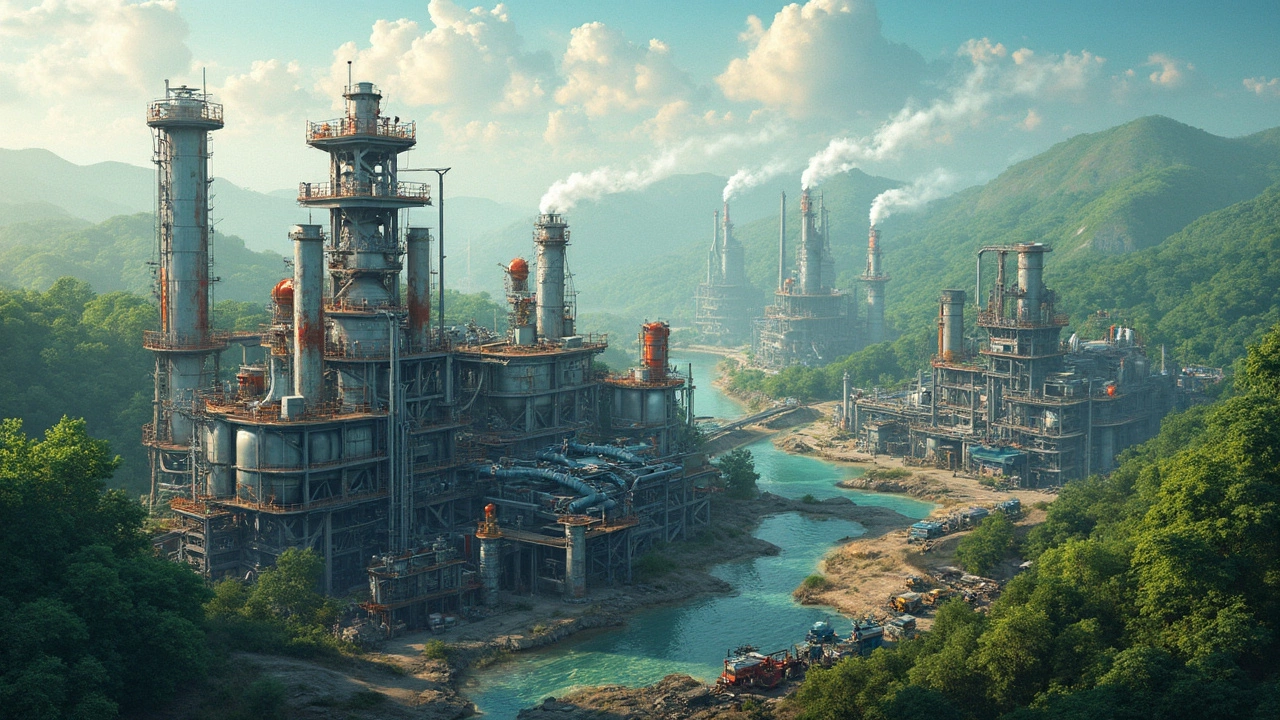- Number One Selling Item in Manufacturing: Insights and Ideas Nov 28, 2024
- Where to Find the Cheapest Electronics: Best Countries for Tech Bargains Jul 6, 2025
- Is AbbVie owned by Abbott? - Unraveling the corporate link between two pharma giants Oct 20, 2025
- Start Manufacturing Your Idea: Step‑by‑Step Guide Oct 8, 2025
- India's Second Biggest Chemical Industry Owner: A Look Beyond Reliance May 5, 2025
Indian Chemical Industry – Who’s Winning the Production Race?
If you’re eyeing the Indian chemical market, the first question you’ll hear is: “Which state makes the most chemicals?” The answer isn’t a surprise for insiders – Gujarat tops the list, and the reasons are practical, not hype.
Gujarat’s edge comes from a mix of cheap power, a big port network, and a business‑friendly vibe. Companies set up factories there because they can run machines 24/7 without sky‑high electricity bills. The nearby ports of Kandla and Mundra make exporting raw material and finished goods cheap and fast. Add a skilled workforce that knows the drill, and you’ve got a recipe for high output.
Why Gujarat Leads the Pack
First, the state’s power policies give manufacturers a predictable, low‑cost supply. When you run a chemical plant, every kilowatt counts – and Gujarat’s rates are among the lowest in the country. Second, the government offers tax breaks and streamlined approvals, so setting up a plant takes weeks, not months. Third, the cluster effect is real: dozens of chemical firms sit side by side, sharing logistics, testing labs, and even talent pools.
Because of these perks, Gujarat handles about 40% of India’s chemical output, covering everything from petrochemicals to specialty dyes. The presence of big players like Reliance and Aditya Birla creates a demand for ancillary services – piping, instrumentation, and waste treatment – which boosts the whole ecosystem.
Opportunities and Challenges Across India
While Gujarat shines, other states are catching up. Maharashtra, with its strong industrial base, focuses on pharma‑grade chemicals. Tamil Nadu leverages its coastal location for export‑oriented specialty chemicals. Each region offers a niche – whether it’s low‑cost labor in Madhya Pradesh or renewable‑energy incentives in Karnataka.
If you’re planning to invest, start by mapping out supply‑chain needs. Close proximity to raw material sources like oil refineries (found in Gujarat and Maharashtra) cuts transport costs dramatically. Also, check state‑specific policies – some offer subsidies for green chemistry or water‑reuse systems, which can reduce operating expenses.
Keep an eye on regulations. The Indian government is tightening environmental norms, especially for water and air emissions. Companies that adopt cleaner technologies now will avoid future penalties and may even qualify for green financing.
Finally, think about talent. Technical colleges in Gujarat and Maharashtra churn out engineers trained in process safety and automation. Partnering with local institutes for internships can give you a pipeline of skilled workers ready to hit the floor.
Bottom line: Gujarat is the heavyweight champion of chemical production, but the rest of India isn’t standing still. Choose a location that matches your product line, cost structure, and growth plan, and you’ll be set to ride the wave of the Indian chemical boom.
Chemicals Manufactured in India: A Deep Dive into the Industry
- Aarav Sekhar
- Apr 14, 2025
India is a powerhouse in chemical manufacturing, producing everything from fertilizers to pharmaceuticals. This article delves into the various types of chemicals produced across the country, spotlighting key regions and their specialties. You'll explore India's massive output in industrial chemicals, its role in meeting global pharmaceutical demands, and the environmental challenges faced by the industry. Discover the factors that make India a critical player in the global chemical market with practical insights for those looking to engage with India's chemical sector.
